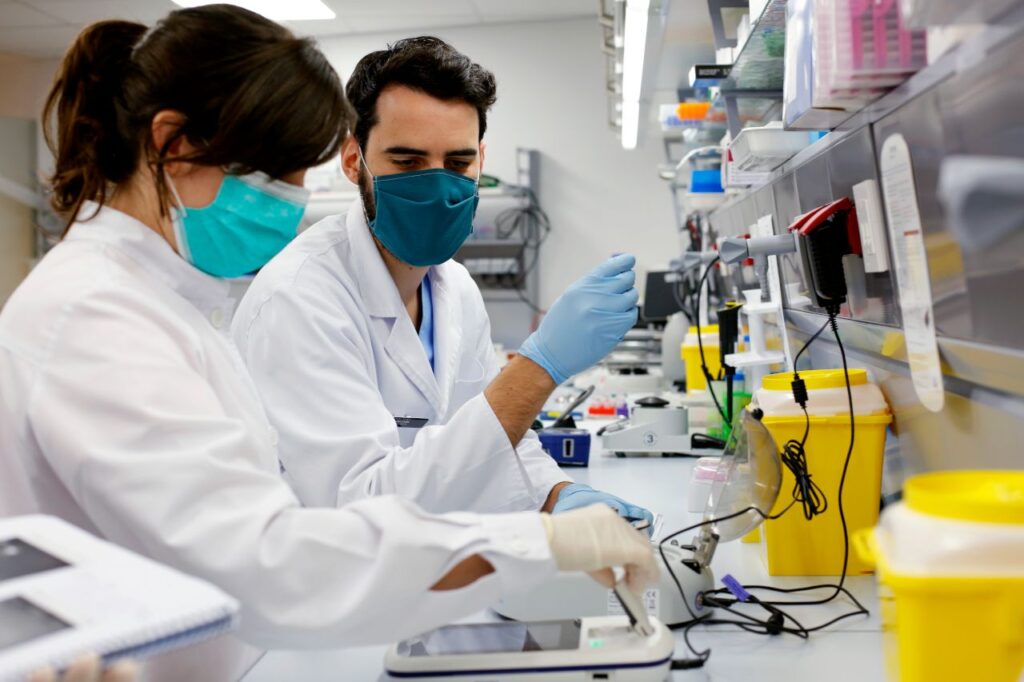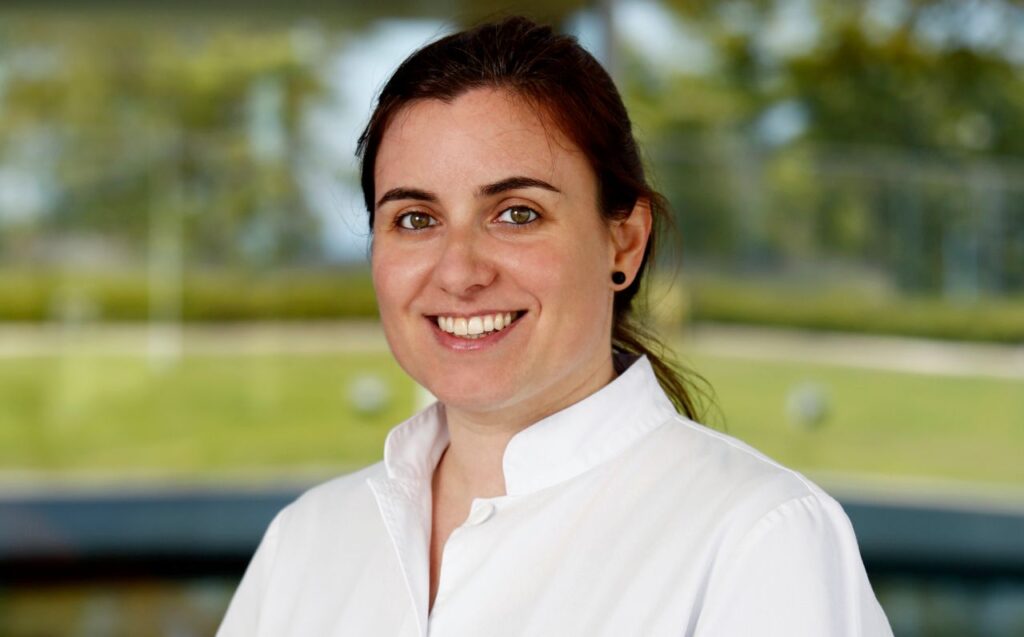
The DNA is key to diagnosing inherited eye diseases
Researchers at IMO Grupo Miranza, a groundbreaking centre in combining clinical and genetic diagnosis, have identified and published two new mutations that cause genetic eye diseases, which is the first step towards gene therapies to curb inherited blindness.
Identifying key points in the DNA that can trigger certain eye diseases is the objective of the analyses carried out at the IMO Grupo Miranza lab, where this groundbreaking genetic diagnosis service allows us to name rare diseases, hence confirming the clinical diagnosis. “The aim is not only to locate the altered gene, but also to determine the nature and impact of its mutations, in order to be more precise in the prognosis and treatment indication for each patient, preparing them for future gene therapies”, explains Dr Esther Pomares, the coordinator of Miranza’s R&D&I Department.
A new syndrome associated with retinal dystrophy
Thanks to these studies, the team of geneticists at IMO Grupo Miranza, also led by Pomares, has just come up with a finding that underpins the existence of the SHILCA syndrome, a set of pathological disorders, proposed a few months ago by Swiss and Italian researchers, only two families of which had been described. “We have identified a third family, the first in Spain, with clinical manifestations that are strongly correlated with this syndrome, which causes skeletal and brain anomalies as well as developmental consequences, apart from Leber’s congenital amaurosis (a type of retinal dystrophy which, despite being an orphan disease, causes 20% of blindness at school age).”
Moreover, according to Pomares, “applying innovative whole-genome sequencing methodologies – which analyse the entire DNA and not just 1-2% of it, as occurs in routine genetic diagnosis – has made it possible for us to increase our knowledge regarding the molecular basis of the new syndrome. “We have shown that it does not only appear if the same specific mutation is inherited from both father and mother (consisting of a duplication of a DNA fragment), as in the first two families described, but that this duplication can also be accompanied by other pathogenic variants.”

According to the geneticist, “knowing about this new diagnosis is an important change for the family, apart from the advantage that, in this case, we have managed to do it very early so that we can keep an eye on the patient’s evolution, who is only two years old and who will probably be eligible for personalised gene therapies in the future.”
This finding, which was recently published in the International Journal of Molecular Science, is not the only advance that the IMO Grupo Miranza Genetics Department has shared with the scientific community in recent months.
The first case of combined corneal dystrophies
Another study that was published in the journal Cornea also highlights the crucial information that genetics can provide, for instance, in the field of the cornea, reporting the first known case worldwide of a patient with two corneal dystrophies: Meesmann’s dystrophy and Lattice dystrophy, two rare diseases that erode the eye surface and cause vision loss.
“Despite this clinical anomaly, by studying the genes associated with both diseases, we have been able to identify a new mutation, which has allowed us to explain the molecular cause of Meesmann’s and describe the first case where these two well-differentiated corneal dystrophies coexist.”
For better diagnosis and prevention of diseases and inherited blindness
Dr Esther Pomares stresses the need to continue researching the genetic basis of inherited eye diseases, in order to expand genetic diagnosis and make it increasingly effective. This challenges her team to develop several projects, promoted by the IMO Foundation, within the Miranza R&D&I Department, while taking into account that many of these disorders still have no cure. Specifying the gene and mutation responsible in each case is the first step towards designing and applying gene therapies that could correct the DNA alteration in some cases, thereby preventing vision loss.